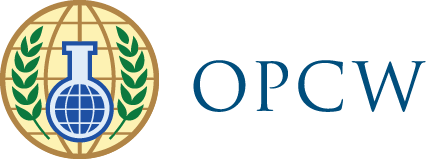Libya has completed the destruction of sulfur mustard agent that was stored in bulk in transportation containers at the depot in Ruwagha, bringing the total amount of Category 1 chemical weapons destroyed by Libya to 22.3 metric tonnes (MT), or nearly 85% of the total declared stocks. Destruction of the remaining 8.82 MT of sulfur mustard that was stored in bulk at Ruwagha resumed on 20 April 2013 and by 4 May the facility completed the destruction under OPCW verification.
Libya also completed the destruction of its remaining Category 3 weapons, in accordance with the timeline it had set in its detailed plan for the destruction of the remaining chemical weapons. What remains now to be destroyed are about 2.45 MT of polymerised sulphur mustard and 1.6 MT of sulphur mustard loaded in projectiles, bombs and bomb cartridges, as well as 846 MT of precursor chemicals (Category 2). The destruction operations were conducted under continuous on-site monitoring by a team of OPCW inspectors
The OPCW Director-General, Ambassador Ahmet Üzümcü, announced the achievement of this destruction milestone in Libya, today in his opening address to the 72nd Session of the OPCW Executive Council: “I would like to congratulate Libya on this accomplishment. I should also like to thank Canada, Germany, and the United States of America for the assistance they provided, which facilitated the redeployment of the inspection team and resumption of destruction operations,” he said.
Libya first began to destroy the bulk sulfur mustard in October 2010 but suspended the operation in early February 2011 when the neutralization unit malfunctioned. Due to the prevailing situation, Libya was unable to resume operations for more than two years. They remained committed to destroy the stockpile as soon as circumstances allowed. The government meanwhile took a number of precautionary measures to secure its remaining chemical weapons while the destruction facility at Ruwagha was repaired and maintained for use.
